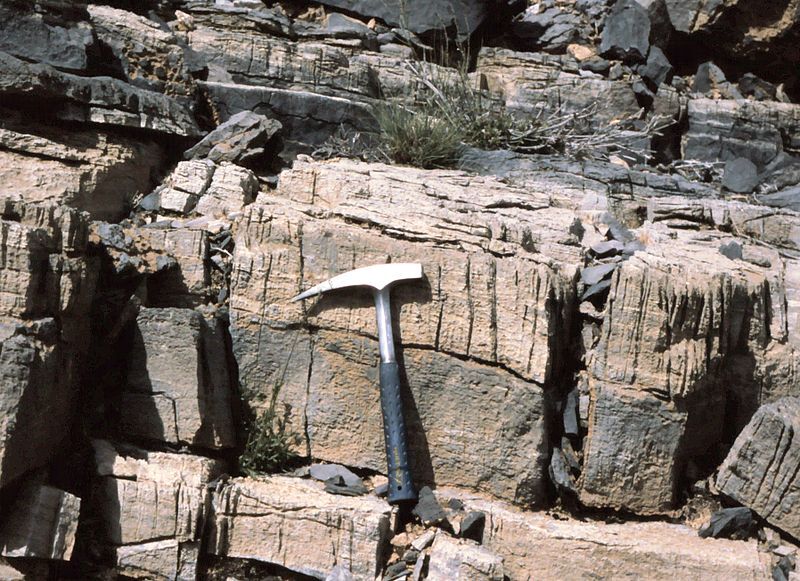A stratigraphic layer is a formation of sedimentary deposits with the same characteristics (colour, particle size, type of rock, etc.).
Sediment that has been deposited on the ocean floor during Earth's history now form piles of sedimentary rocks, usually organized in layers or strata. Also, it is possible to find traces of living organisms called fossils in these layers. Stratigraphy is the study of the sequence in which these strata or layers of rocks appear. Stratigraphy aims at explaining the origin of the appearance of these strata.
Here are different examples of stratigraphic layers.
When specialists want to reproduce the geological events of a given region, they must identify and compare the stratigraphic layers of several places. They must then build their scenario according to certain basic principles.
|
General principles used in stratigraphy |
Statements |
|
A stratigraphic layer has the same age over its entire extent. |
|
The lowest stratigraphic layers are the oldest and the highest ones are the youngest. This principle refers to the concept of relative age. Absolute age is expressed in the number of years. Reference is then made to dating (see the geological time scale for more information). |
|
This principle states that the stratigraphic layers are formed horizontally by sedimentation. If part of the layer is not horizontal, then we can say that this sequence has undergone deformations AFTER its formation, by deposition of sediment. |
|
A stratigraphic layer is always older than the faults or the rocks cutting it, which would have been introduced later in the geological history of this ground. |
|
The principle states: “the content is older than the container.” It should be understood that a fault which intersects a stratigraphic layer will be younger than the layer which it intersects. |
|
Stratigraphic hiatus, concordances, and disconformities are information gaps about given time intervals in the succession of geological events. Stratigraphic hiatus: Concordances and Disconformities: |
All these principles allow geologists to establish a relative dating of geological events. They can therefore determine the approximate age of rocks by examining their location in a mass of overlapping layers. For example, it can be deduced that a fault which crosses a layer possibly appeared after the formation of the layer. The rock is therefore older than the fault. This method does not allow the determination of the exact age of the stratigraphic layer; however, it makes it possible to classify events and structures according to their order of appearance.
New dating methods have been developed since the middle of the 20th century. These absolute dating methods make it possible to determine the age of fossils or stratigraphic layers with greater accuracy. This type of dating can be carried out by determining the quantity of certain radioactive elements, such as uranium or carbon-14.


